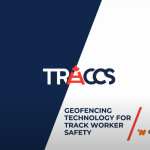Ten Construction tech trends
The top Construction tech trends for you to follow, from Building Information Modelling (BIM), drones and aerial imagery to artificial intelligence and machine learning, the construction industry is embracing an array of technologies to improve efficiency, collaboration, and sustainability. Wearable technology is being used for real-time monitoring of workers’ health and safety, while augmented reality and virtual reality are being leveraged for design visualisation, training, and remote collaboration.
1. Building Information Modelling (BIM)
BIM is a digital representation of the physical and functional characteristics of a facility, providing a comprehensive view of a project’s lifecycle, from design to operation and maintenance.
2. Internet of Things (IoT)
IoT refers to the network of interconnected devices, sensors, and software, which collect and exchange data. In construction, IoT is used for real-time monitoring of assets, equipment, and environmental conditions.
3. 5G technology
The deployment of 5G networks has enabled faster communication and data transfer on construction sites, enhancing connectivity and real-time collaboration between project teams.
4. Drones and aerial imagery
Drones equipped with cameras and sensors are used to gather real-time data, monitor site progress, and improve project efficiency.
5. Augmented Reality (AR) and Virtual Reality (VR)
AR and VR technologies are utilised in construction for design visualisation, training, and remote collaboration, improving project communication and decision-making.
6. Robotics and automation
Robotics and automated machinery are increa. singly being used in construction tasks, such as bricklaying, concrete pouring, and site inspections, to increase efficiency and reduce labour costs.
7. Wearable technology
Wearables, like smart helmets, glasses, and vests, are used in combination with GeoFencing technology like Onwave’s OWL solution for real-time monitoring of workers’ health and safety, as well as enhancing on-site communication.
8. Artificial Intelligence (AI) and Machine Learning (ML)
AI and ML are being used for predictive analytics, cost estimation, and project scheduling, optimising construction processes and decision-making.
9. Digital Twins
Digital Twins are virtual representations of physical assets, processes, or systems. In construction, they help in monitoring, analysis, and optimisation of a project throughout its lifecycle.
10. Sustainable and green construction
Construction connectivity technologies are being leveraged to create more energy-efficient buildings, reduce waste, and minimise the environmental impact of construction activities.








